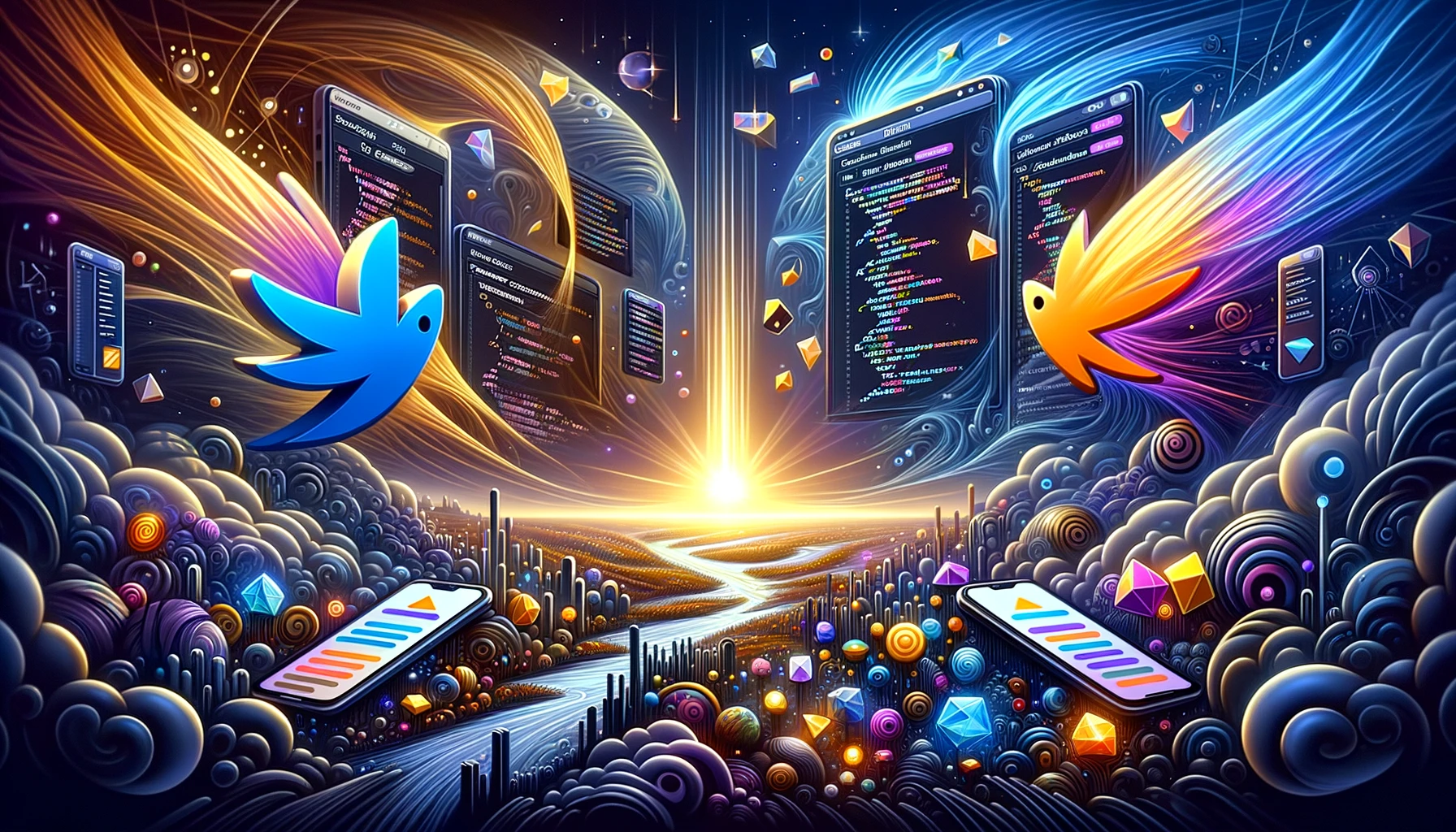
In today's dynamic digital landscape, creating efficient, beautiful, and intuitive mobile applications is more crucial than ever before. Google's Flutter and Dart have emerged as powerful allies in this endeavor, especially for e-commerce and portal solutions. But what makes them so special?
Flutter is a UI toolkit that enables developers to craft natively compiled applications for web, mobile, and desktop from a single codebase. This unified approach drastically cuts down development time, ensuring faster time-to-market – a critical factor for e-commerce businesses that need to keep up with rapid market changes.
Reference: Flutter's official documentation
Dart, the language behind Flutter, offers a rich standard library and robust performance optimizations. The intuitive nature of Dart reduces the learning curve for developers, and its tight integration with Flutter means you get a seamless development experience.
Reference: Dart's official documentation
E-commerce and portal apps must not only function well but also look appealing. Flutter offers a vast collection of customizable widgets that adapt to different platforms, ensuring your app maintains a consistent look and feel on both iOS and Android.
Firebase, Google's Backend-as-a-Service (BaaS), works wonders with Flutter. Firebase provides essential backend services, from real-time databases to authentication, making it easier to develop feature-rich e-commerce apps. The synergy between Flutter, Dart, and Firebase can significantly speed up development while ensuring scalability.
Reference: Firebase & Flutter
Modern e-commerce solutions are leaning towards microservices – an architectural style that structures applications as a collection of loosely coupled services. Dart and Flutter facilitate easy integration with microservices. As a result, app functionalities like payment processing, product cataloging, or customer management can be developed, deployed, and scaled independently, ensuring agility and resilience.
Flutter's ability to compile to native ARM code ensures that apps built using this framework are fast and responsive. For e-commerce platforms, where split-second delays can impact conversions, this performance boost is invaluable.
Hot Reload, a feature in Flutter, allows developers to instantly view the results of their latest edits. This not only accelerates the development cycle but also makes debugging faster and more efficient, ensuring that your e-commerce app is market-ready in no time.
Being open source, Flutter and Dart benefit from community contributions. A vibrant community translates to frequent updates, a plethora of plugins, and a wealth of shared knowledge – factors that can be game-changers for developing advanced e-commerce and portal applications.
Whether it's connecting to a cloud-based solution, an on-premises server, or integrating with other third-party services, Flutter and Dart offer flexibility. This ensures that e-commerce apps can easily integrate with diverse systems, ensuring data consistency and real-time updates.
By enabling developers to write code once and deploy it across multiple platforms, Flutter reduces the development efforts and associated costs. For businesses, this means getting a high-quality e-commerce app without breaking the bank.
In the realm of mobile app development for e-commerce and portal solutions, Flutter and Dart stand out as forward-thinking technologies. Their integration with Firebase and adaptability with microservices position them as top choices for businesses aiming for scalability, performance, and aesthetics.
Building a robust e-commerce solution requires more than just a functional app. It demands speed, adaptability, and a stellar user experience. By choosing Flutter and Dart, businesses are not just adopting a technology; they're embracing a future-ready strategy.
We can't wait to talk about your ideas, goals, needs and dreams. Let's set up a call.